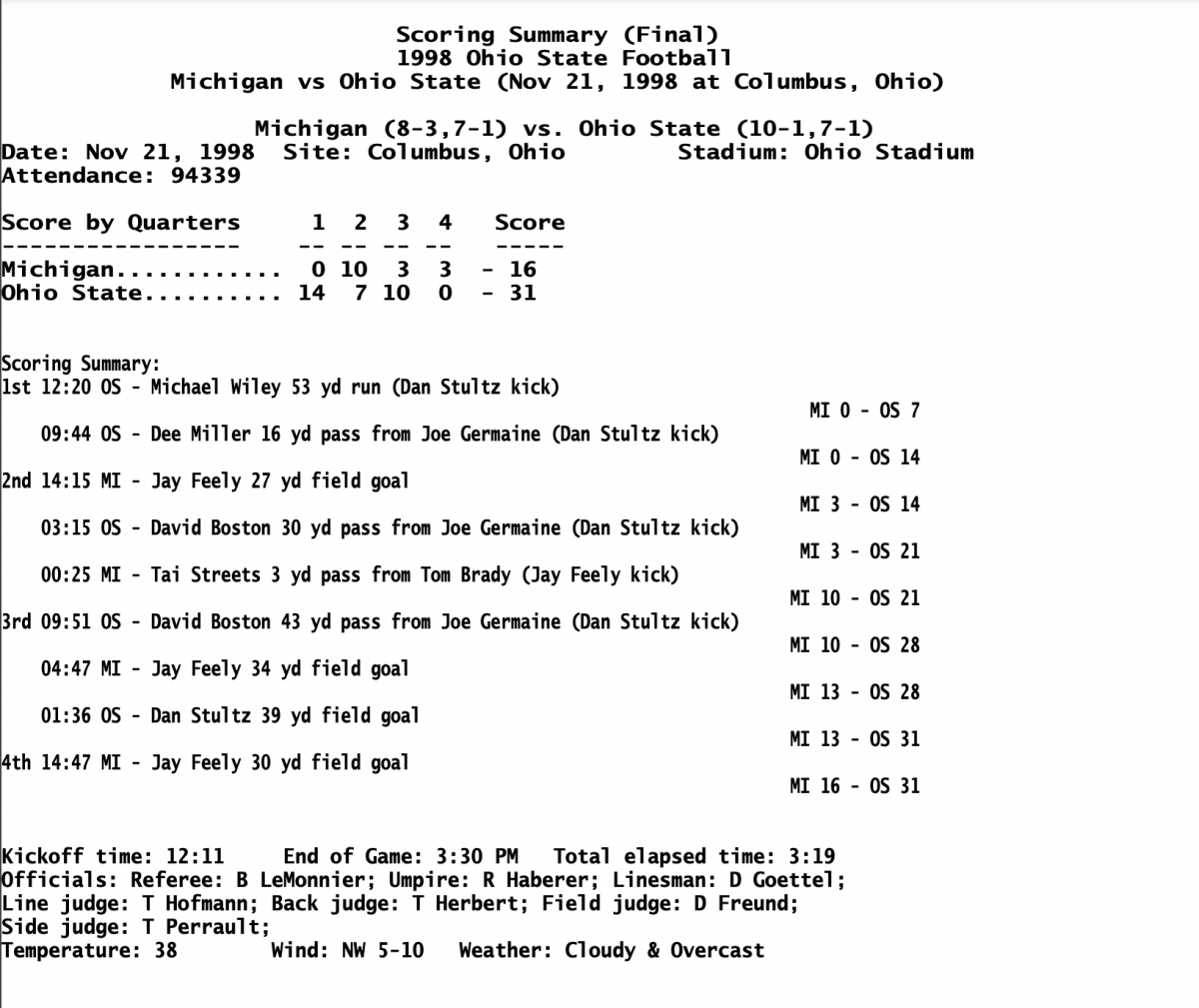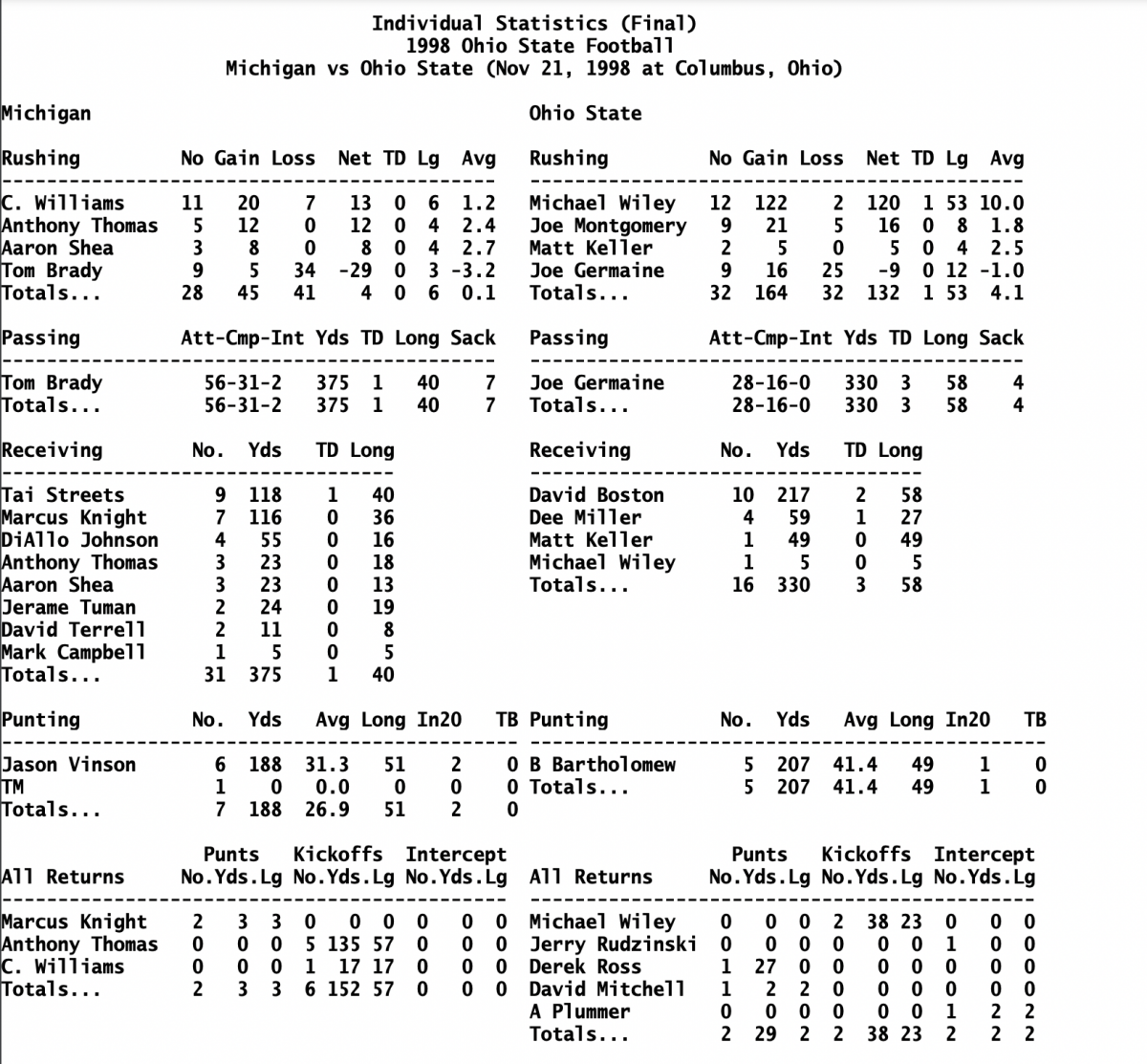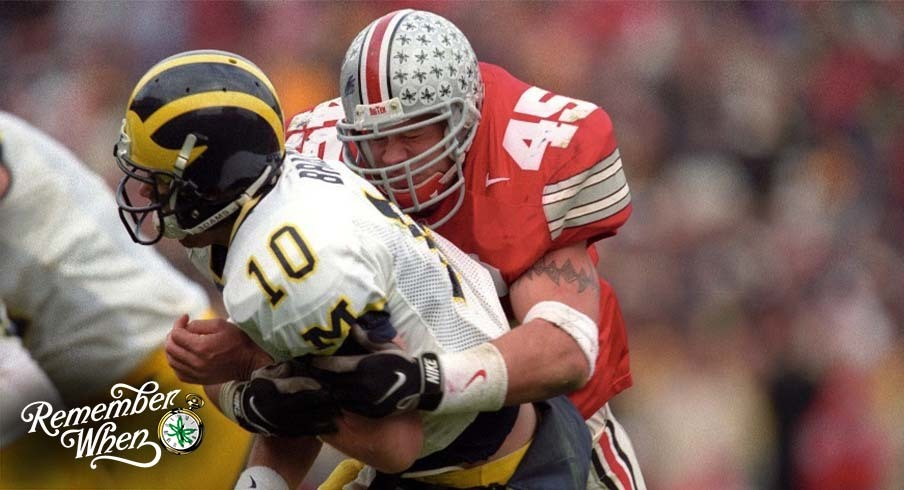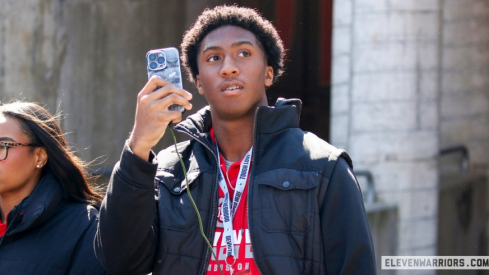In 1998, Tom Brady wasn’t Tom Brady.
No one could’ve guessed the game-managing Michigan quarterback would go on to become the consensus Gridiron GOAT, and Brady was still two years away from sneaking into the penultimate round of the 2000 NFL draft as the 199th overall pick. Hell, he wasn’t even TB12, as Brady donned a No. 10 jersey for the maize and blue.
But perhaps Brady wouldn’t have to be any of those things to beat the Buckeyes in his first of two starts in The Game.
After all, Michigan held an 8-1-1 record in the past 10 editions of the rivalry entering the Nov. 21, 1998 affair. Lower-ranked Wolverine teams toppled then-undefeated Buckeye clubs in both 1995 and ‘96, despite Ohio State entering both matchups as the No. 2 team in the country. And in 1997, Heisman Trophy-recipient Charles Woodson led Michigan to a third straight rivalry win en route to an unbeaten season and a share of the national championship, all with Brady still biding his time on the bench.
However, things were supposed to be different the following year. Well, they had to be different, for John Cooper’s sake. Coop had one win over Ohio State’s archnemesis to his name in 10 tries, dating back to his first year at the helm of the program in 1988. And entering the 1998 season, his Buckeyes were college football's preseason No. 1 and the favorites to win a national title.
With a roster headlined by returning All-Americans Andy Katzenmoyer, Antoine Winfield and Rob Murphy, record-setting wideout David Boston and prolific quarterback Joe Germaine, the Buckeyes were well on their way to winning that title through eight games. But two weeks before The Game, top-ranked Ohio State tumbled at home against unranked Michigan State, conceding a late multi-score lead to suffer a 28-24 defeat that threatened to derail the Buckeyes’ promising season.
After a bounce-back blowout win over Iowa, Ohio State held a 9-1 record and the No. 5 spot in the AP poll as it prepared to host the Wolverines.
The reigning co-national champs started the season as a top-five team, but the high quickly turned into a hangover as Michigan dropped both of its first two contests by double-digit margins. By Week 3, the Wolverines had already fallen out of the AP Top 25 completely. They slowly climbed back up the ladder over the next couple of months, though, rattling off eight straight wins – including back-to-back impressive November victories over No. 9 Penn State and No. 8 Wisconsin – to enter Columbus as the nation’s No. 11 team.
Despite Ohio State’s recent woes in the rivalry, the Buckeyes were a 10-point favorite in the matchup – not that it did them any favors in the previous tilt in Columbus (1996) when they was favored by 17 before coming up short.
But this time, the oddsmakers got it right.

Before the midway mark of the first quarter, the Buckeyes had already mounted a 14-point lead. A 53-yard touchdown run by Michael Wiley broke the ice early, and a 16-yard pass from Germaine to Dee Miller put Ohio State in control before six minutes ticked off the clock.
Michigan showed signs of life in the second stanza, recovering an Ohio State fumble to set up a field goal at the start of the quarter and closing the half with a Brady touchdown pass. But before the second Wolverine score, the Buckeyes blocked a punt to take over deep in Michigan territory. Three plays later, Boston hauled in a 30-yard touchdown toss from Germaine. By the end of the half, Ohio State held a 21-10 edge.
The Wolverines wouldn’t tighten the gap after that. Brady started the second half with an interception, and Ohio State capitalized, quickly finding the end zone again 74 seconds later on another long bomb from Germaine to Boston. Both teams traded a field goal after that, and with a 31-13 lead entering the final frame, Ohio State didn’t need to score again. Brady helped seal the deal by throwing another pick with 6:20 to play, and Michigan wound up with just six second-half points in an ill-fated comeback effort that never got off the ground.
Katzenmoyer, Damon Moore and Brent Johnson led a defensive effort that saw Brady get sacked seven times on the day. Michigan’s QB1 finished with 375 yards passing, but it took him 56 attempts to do so as Ahmed Plummer and Jerry Rudzinski picked off two of them. Germaine outdueled Brady on an efficient 16-for-28 passing day in which he threw for 330 yards and three scores.

But perhaps the MVP of the day was Boston, who hauled in 10 receptions for a whopping 217 yards – the third-most in program history at the time – and a pair of touchdowns. That performance helped bolster Boston to a then-Buckeye single-season record 1,435 receiving yards by the end of the year.
The win was enough to secure Ohio State a three-way tie with Michigan and Wisconsin for a share of the Big Ten title, but it didn’t get the Buckeyes over the hump for an appearance in the first-ever BCS National Championship Game. Ohio State finished fourth in the final BCS rankings and had to watch Tennessee beat Florida State to take home a trophy that many thought the Buckeyes could hoist. In turn, Ohio State capped off the season with a 24-14 Sugar Bowl win over Texas A&M.
Unlike in several other years of the Cooper era, though, it wasn’t a Michigan loss that spoiled Ohio State’s season. Coop got his much-needed rivalry win, even if it would ultimately be his last. And a quarter-century after the fact, it’s made all the sweeter for Buckeye fans knowing their team got one over on a player that would go on to enjoy what is widely considered the greatest NFL career of all time.
In a year when Ohio State looks to halt another multi-game losing streak to its archrival, the Buckeyes have to hope the result of the 2023 contest resembles the one that took place 25 years ago.


